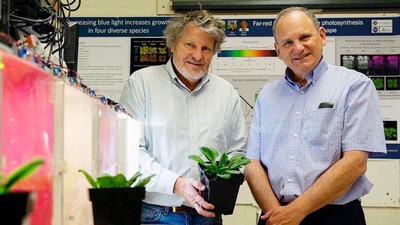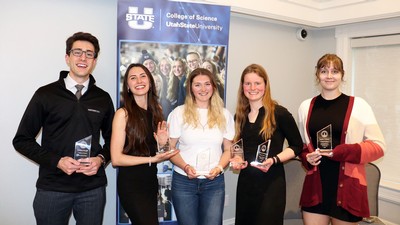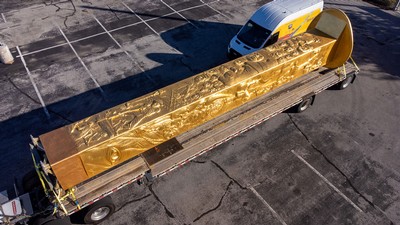New Sensor Will Measure Earth's Energy Loss
NASA successfully tested a new instrument that will provide scientists with unprecedented measurements to further the agency's understanding of climate change.
Launched June 7 aboard a stratospheric balloon at Fort Sumner, N.M., Far-Infrared Spectroscopy of the Troposphere (FIRST) is a prototype infrared sensor developed by Utah State University's Space Dynamics Laboratory (SDL), North Logan, and NASA's Langley Research Center, Hampton, Va. FIRST's measurements of the cooling and heating of the atmosphere will help researchers learn more about how the Earth gains and loses energy.
"FIRST opens up an entire new window for us to observe the Earth and its atmosphere," said Marty Mlynczak, principal investigator for FIRST and senior research scientist at NASA Langley.
The team started receiving data shortly after FIRST was launched aboard a stratospheric balloon, which is 10 times larger than a normal hot air balloon. During the launch, the balloon lifted the FIRST instrument approximately 20 miles into the atmosphere, where it was able to take measurements.
The FIRST instrument returned energy measurements ranging from 10 to 100 microns in wavelength. One micron equals one thousandth of a millimeter; one human hair is about 50 microns wide. Current infrared sensors in space do not perform measurements beyond 15 microns. Scientists believe that the Earth loses half its energy between 15 to 100 microns.
"This sensor can measure a range of the spectral region that has not been measured before," said SDL's Stan Wellard, FIRST program manager.
The initial data was received in near real-time. Following the flight, the instrument will be recovered, and NASA and SDL will further analyze the data. Once FIRST demonstrates that it can make the necessary measurements, the hope is for development of a satellite version.
"This science has come to the forefront," said Mlynczak. "We look forward to taking this technology into space."
The FIRST team consists of NASA Langley, SDL and the Smithsonian Astrophysics Observatory at Harvard University, Cambridge, Mass., who provided a key optical element, technical support for the instrument, and expertise for the balloon launch.
The project is part of the NASA Instrument Incubator Program managed by the NASA Earth-Sun System Science Technology Office. This low-cost program develops prototypes to remove technical risk for new instruments designed for use on satellites.
For more information about NASA and agency programs on the Internet, visit the Web site.
Contacts: Chris Rink (757) 864-6786, NASA Langley Research Center, Hampton, Va.
Trina Paskett (435) 797-4678, Utah State University's Space Dynamics Laboratory
A prototype infrared senor was launched June 7, aboard a stratospheric balloon at Fort Sumner, N.M.
TOPICS
Research 881stories Climate 151stories Space 140stories Energy 102storiesComments and questions regarding this article may be directed to the contact person listed on this page.






